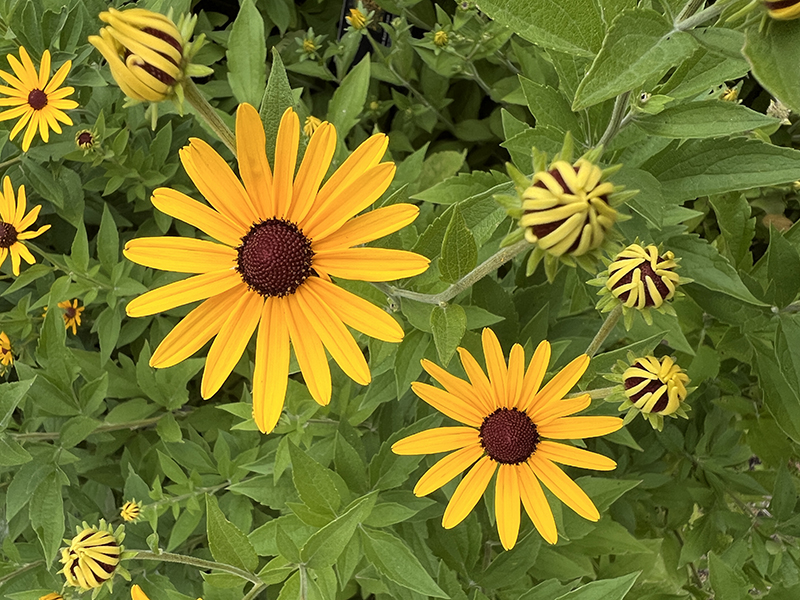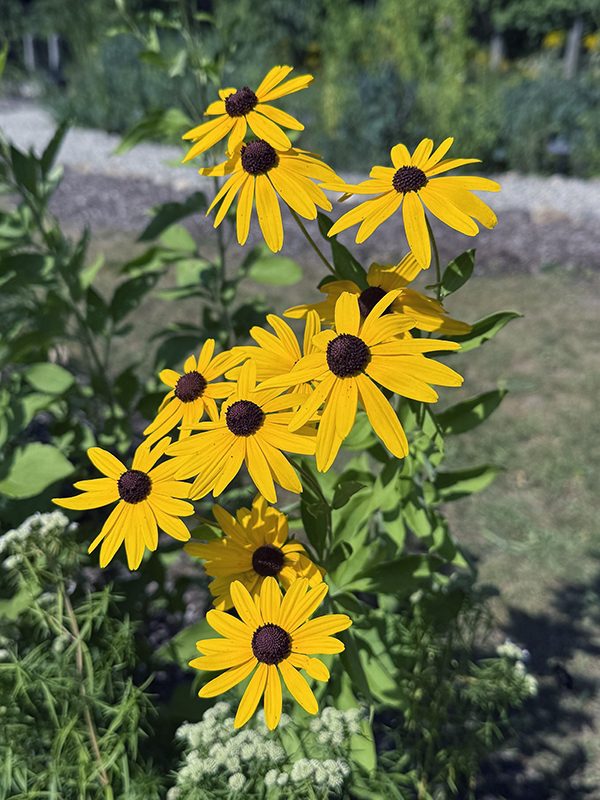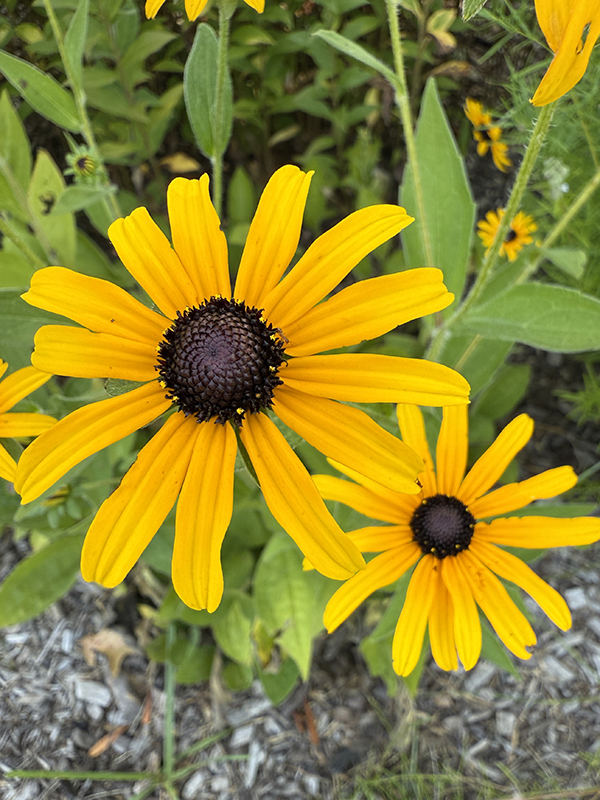
August 14, 2025| Education, Environment
By: Laurie and Marty Kane
One of the joys of choosing native plants is in discovering which varieties will keep the garden colorful and vibrant all summer long. Our native gardens are ablaze with an abundance of golden-yellow black-eyed Susans and brown-eyed Susans, collectively known as rudbeckia. While the names can be confusing, both the black-eyed and brown-eyed species are great choices for long-lasting visual interest as the daisy-like flowers will bloom continuously from July through October. While other plants fold in the summer heat, these retain their luxuriant deep green foliage and butter-yellow blooms.
We spent some time in our garden trying to figure out which were the black-eyed and brown-eyed species, since we knew both were part of our mass planting garden. Black-eyed Susans are a true perennial that will return year after year, while some brown-eyed varieties are considered to be short-lived perennials or biennials that reseed freely, giving the effect of a perennial. The yellow flowers all have dark brown to purplish centers, but black-eyed Susans have larger flowers with smooth leaves and stems. Brown-eyed Susan tends to be bushier plants and have clusters of smaller flowers with rough, hairy leaves, stems, and branches. We can report that trying to tell the two apart is not easy, even a plant identifying app on your phone will struggle to differentiate the two.
 |
 |
| Can you spot the difference? | |
While separating specific varieties can be complicated, growing them in your garden is not. There are approximately ten different species of rudbeckia that you can purchase for your garden under the common name black-eyed Susans, they will all bring color and fun to your garden. In general, rudbeckia will grow between two and three feet, although they can grow of five feet. They are adaptable and resilient, tolerating a wide range of soil and climactic conditions, including heat and drought. Rudbeckia make lovely cut flowers and are superb pollinator plants, attracting various birds, butterflies, bees, and other beneficial insects. Some are host plants for various moths and butterflies.
Historically, Native Americans made yellow dye from the flowers and used the plant as a medicinal herb to treat colds. One variety in our garden, Rudbeckia subtomentosa, also known as sweet coneflower, has flowers that produce a vanilla or anise-like scent when crushed. Overall, rudbeckia tend to be so easy to grow that many gardeners will thin them out a bit so they don't completely take over the garden.
We invite you to visit our native gardens at 125 Landing Road, Landing, NJ, to enjoy the late-summer color of these and other buzzworthy native plants in bloom. We hope you’ll be inspired to incorporate native plants into your yard or garden, supporting local wildlife and contributing to a healthier environment!